Hummingbirds, nature’s aerial acrobats, have captivated birdwatchers and scientists alike with their remarkable ability to hover in place with precision and grace. These tiny avian marvels—some weighing less than a penny—can suspend themselves in mid-air with such stability that they appear almost motionless as they feed from flowers. Their hovering capability represents one of the most energy-intensive and complex flight behaviors in the animal kingdom, requiring specialized adaptations that have evolved over millions of years. For birdwatchers eager to understand the magic behind this supernatural-seeming ability, this article explores the ten fascinating aspects of hummingbird hovering that make these diminutive birds truly extraordinary aerial specialists.
1. The Figure-Eight Wing Motion
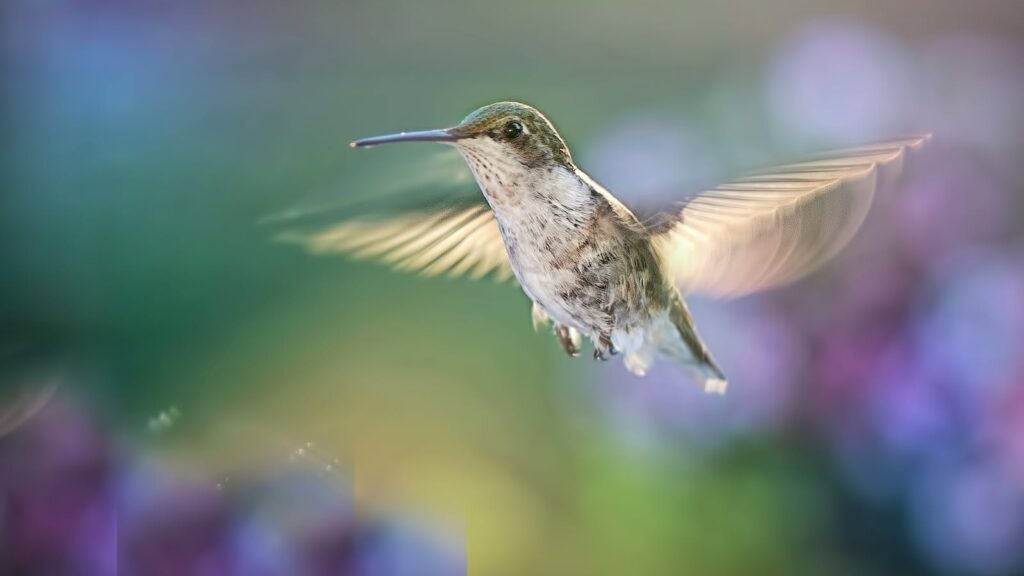
Unlike other birds that generate lift primarily on the downstroke, hummingbirds produce lift on both downstrokes and upstrokes through a unique figure-eight wing motion. Their wings trace this distinctive pattern approximately 50-80 times per second, creating continuous thrust that allows them to remain stationary in the air. This remarkable wing trajectory involves rotating the wing at the shoulder, wrist, and base, enabling the bird to generate force in multiple directions simultaneously. The figure-eight pattern effectively creates a constant stream of lift, allowing the hummingbird to hover with remarkable stability even in challenging conditions like light rain or gentle breezes.
2. Astonishing Wing Beat Frequencies
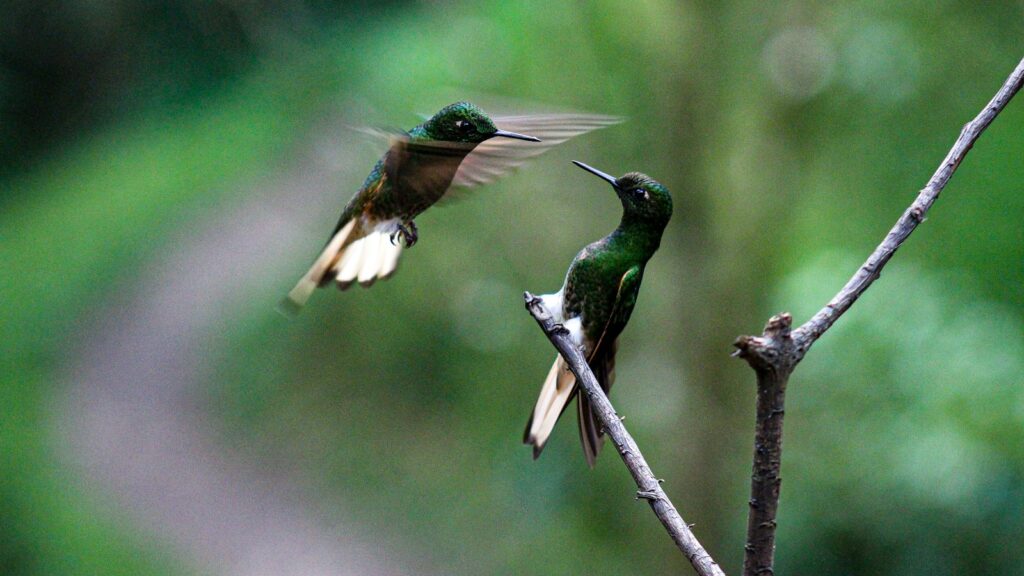
Hummingbirds achieve hover through wing beat frequencies that boggle the human mind, ranging from 12 to 80 beats per second depending on the species. The Ruby-throated Hummingbird, common throughout eastern North America, typically beats its wings about 53 times per second during normal hovering. During courtship displays or competitive interactions, males can increase this rate to a staggering 200 beats per second for brief periods. These incredible frequencies produce the characteristic humming sound that gives these birds their name—a sound created by air rushing over their rapidly beating wings rather than by their vocal organs. The human eye cannot track these individual wing beats, which is why hummingbird wings appear as nothing more than a blur during observation.
3. Specialized Wing Anatomy
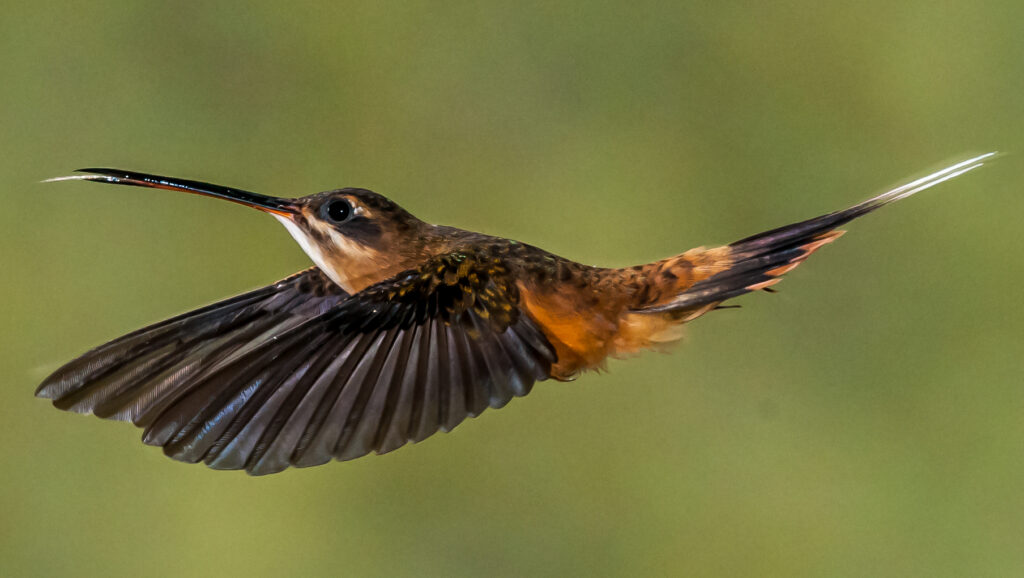
The hummingbird wing represents a marvel of evolutionary engineering specifically adapted for hovering flight. Unlike the flexible, feathered wings of other birds, hummingbird wings remain relatively stiff except at the shoulder joint, which allows for the extreme range of motion needed for their unique flight pattern. Their wing bones have undergone significant modifications, with a shortened humerus (upper wing bone) and elongated hand bones creating the perfect proportions for their distinctive flight mechanics. The primary flight feathers are notably narrow and stiff, optimized for the rapid wing beats required for hovering. Additionally, hummingbirds possess a specialized wrist joint that allows nearly 180-degree rotation during each wing beat cycle—a crucial adaptation that enables their extraordinary aerial capabilities.
4. Extraordinary Metabolic Demands
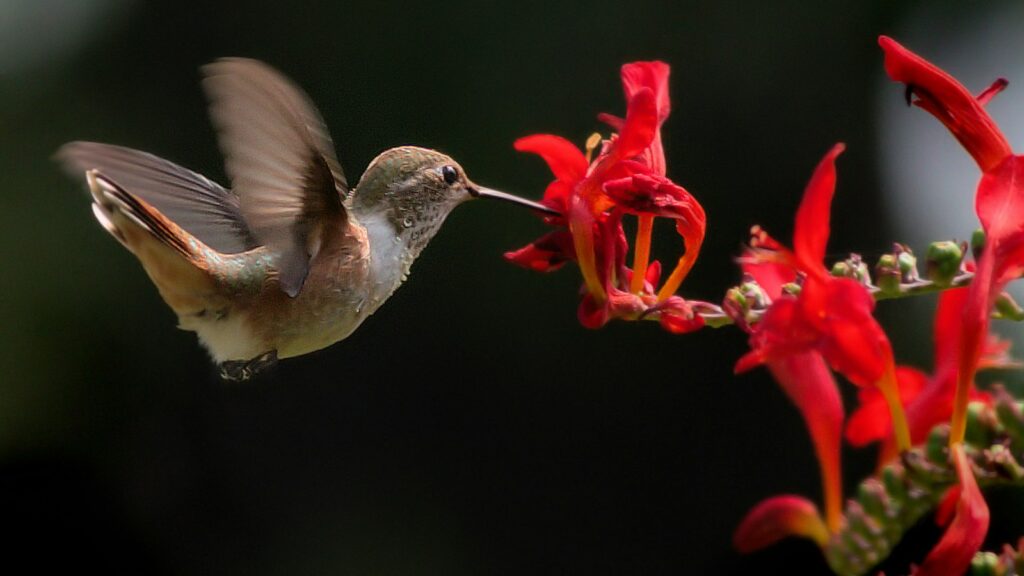
Hovering represents the most energetically expensive form of flight in the animal kingdom, requiring hummingbirds to develop remarkable metabolic adaptations. While hovering, a hummingbird’s heart rate can exceed 1,200 beats per minute, and they consume oxygen at up to 10 times the rate of elite human athletes during peak exertion. To fuel this extraordinary energy expenditure, hummingbirds must consume more than their body weight in nectar daily, visiting hundreds of flowers and feeding every 10-15 minutes throughout their waking hours. Their specialized digestive system processes this sugar-rich diet with remarkable efficiency, extracting energy within minutes of consumption. At night, many species enter torpor—a hibernation-like state that drastically reduces their metabolic rate—to conserve the energy they’ll need for the next day’s hovering activities.
5. Precision Stabilization Systems
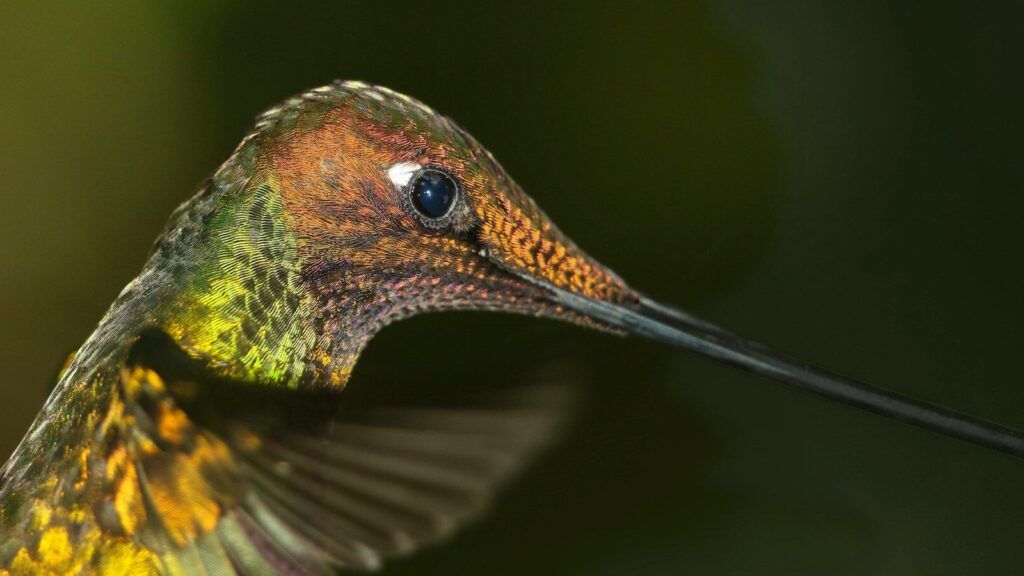
The stability displayed during hummingbird hovering comes from a sophisticated array of sensory and neurological adaptations that allow for instant corrections to maintain position. Their vision plays a critical role, with specialized regions in their eyes that process visual information at speeds unmatched by other birds, helping them detect even minute changes in their position relative to a flower. The hummingbird brain contains enlarged visual processing centers and motor neurons that control wing movements with microsecond precision. Their vestibular system—the balance mechanism in the inner ear—has evolved heightened sensitivity to detect even the slightest spatial displacements. Research using high-speed cameras and wind tunnels has revealed that hummingbirds can detect and correct for positional changes in less than 30 milliseconds, making their hovering appear perfectly stationary to human observers.
6. Tail Rudder Mechanics
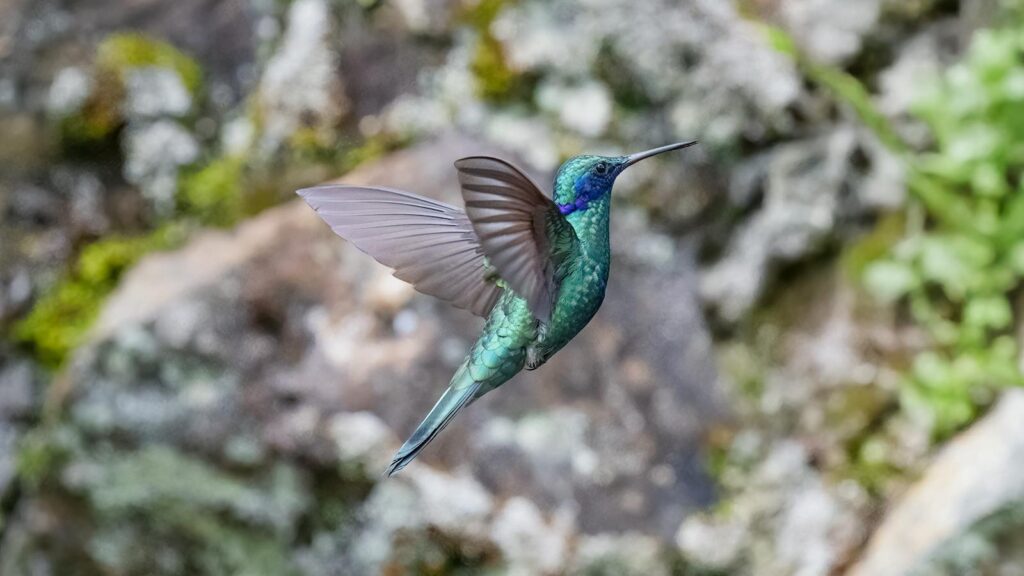
While the wings generate the primary lift and thrust for hovering, the hummingbird’s tail serves as a crucial stabilizing rudder that fine-tunes their position in space. The tail feathers can spread, contract, tilt, and rotate independently, allowing for minute adjustments that complement the work of the wings. When hovering in place, hummingbirds often display a slightly tilted tail position that helps counterbalance the force generated by their wings. During more challenging hovering conditions, such as in gusting winds, the tail movements become more pronounced and rapid. Researchers studying hovering mechanics have noted that hummingbirds with experimentally shortened tail feathers show reduced hovering stability, highlighting the critical role this often-overlooked appendage plays in their aerial performance.
7. Adaptations for Sustained Flight Muscle Performance
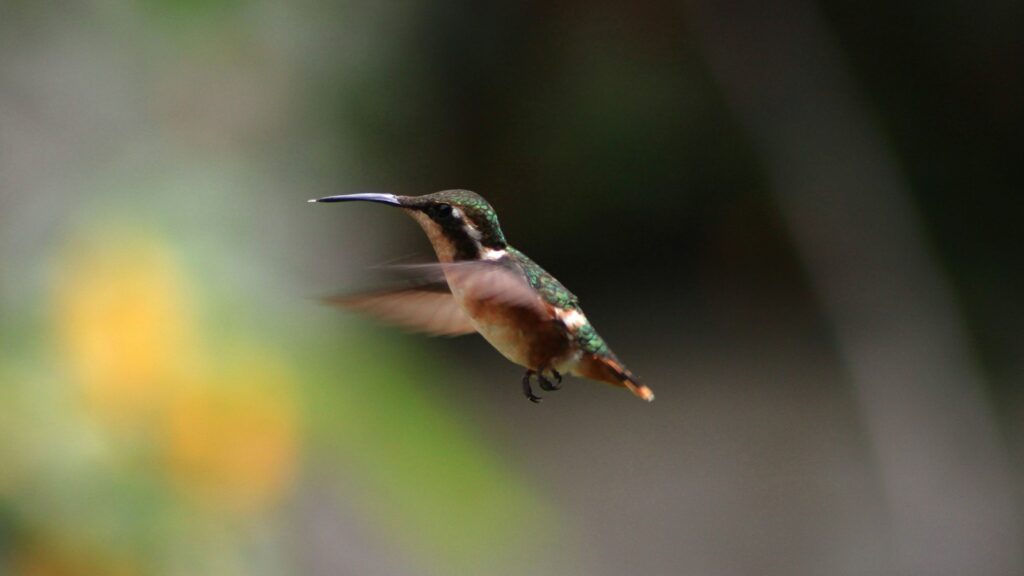
The extraordinary demands of hovering required hummingbirds to evolve specialized flight muscles unlike those found in any other bird. Their flight muscles constitute approximately 30% of their body weight—the highest proportion among all birds—providing the power needed for sustained hovering. Unlike other birds, which have mainly “slow-twitch” oxidative muscle fibers for endurance flight, hummingbirds possess a unique type of muscle fiber that combines the speed of fast-twitch fibers with the endurance of slow-twitch fibers. These muscles are packed with mitochondria—cellular powerhouses that provide energy—at densities up to three times higher than found in mammalian muscles. Additionally, hummingbird flight muscles maintain higher operating temperatures than other birds, improving contractile efficiency for the rapid wing movements required for successful hovering.
8. Precision Hovering Techniques for Feeding
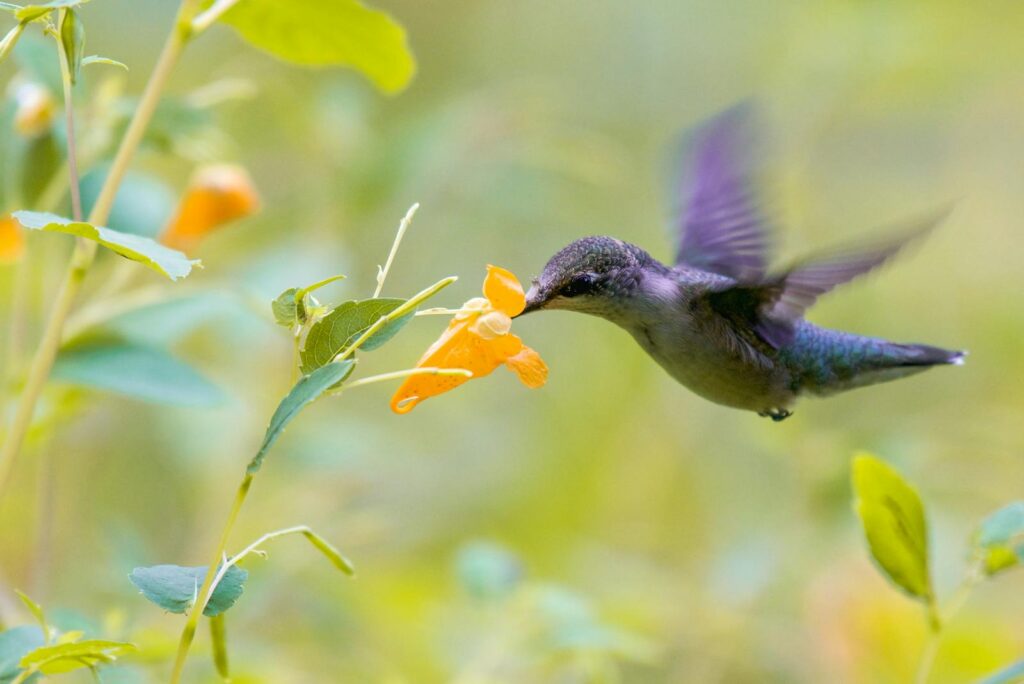
The ultimate purpose behind a hummingbird’s hovering ability is efficient feeding, and they have developed sophisticated techniques to extract nectar while maintaining perfect position. When approaching a flower, hummingbirds first assess its position from several inches away, then approach on a precise trajectory before establishing a stable hover. They typically position themselves at an optimal distance where their specialized bills and tongues can reach the nectar without their wings disturbing the flower. During feeding, they maintain this position with remarkable precision, making minute adjustments as needed when feeding from moving flowers on windy days. High-speed photography has revealed that many species have perfected the art of “probing hovering,” where they maintain a fixed body position while moving only their heads and bills to access nectar from different angles within the same flower.
9. Hoverability Across Different Species
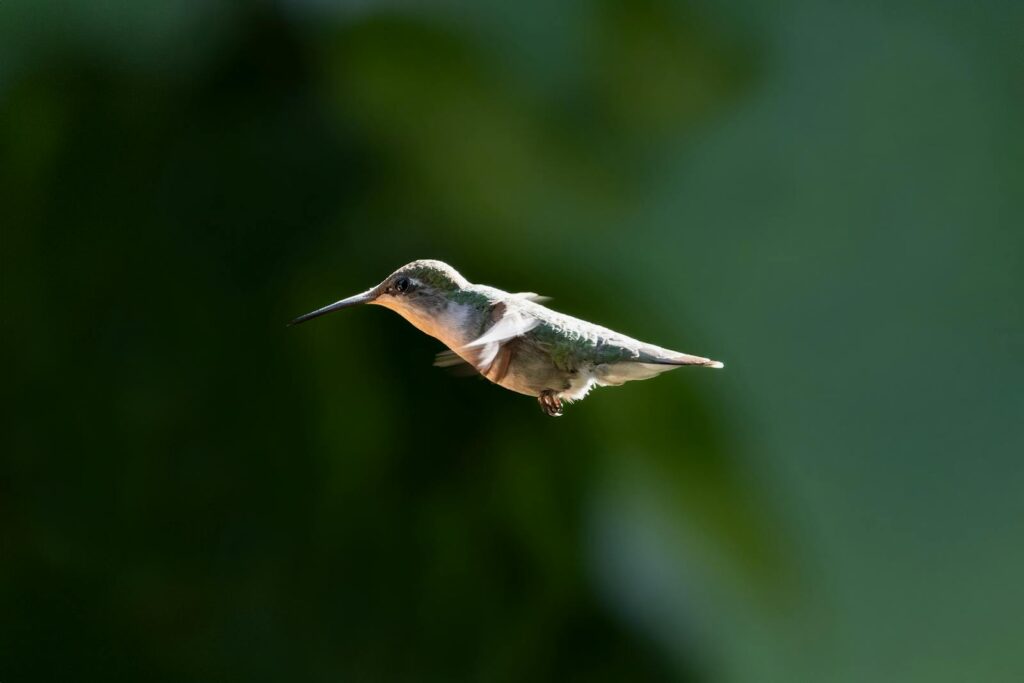
The approximately 360 hummingbird species worldwide display varying degrees of hovering ability depending on their ecological niche and evolutionary history. Species with shorter, more rounded wings, like the Ruby-throated Hummingbird, typically demonstrate the most precise hovering capabilities, maintaining near-perfect stability even in challenging conditions. Mountain-dwelling species, such as the Giant Hummingbird of the Andes, have evolved slightly different hovering techniques to compensate for the reduced air density at high altitudes, using deeper wing strokes and slightly lower beat frequencies. The Sword-billed Hummingbird, with its extraordinarily long bill, has developed specialized hovering techniques to balance this unusual appendage, often hovering at a more vertical angle than other species. These variations in hovering techniques reflect the remarkable evolutionary adaptability of these specialized birds across diverse habitats.
10. The Neurological Control Systems
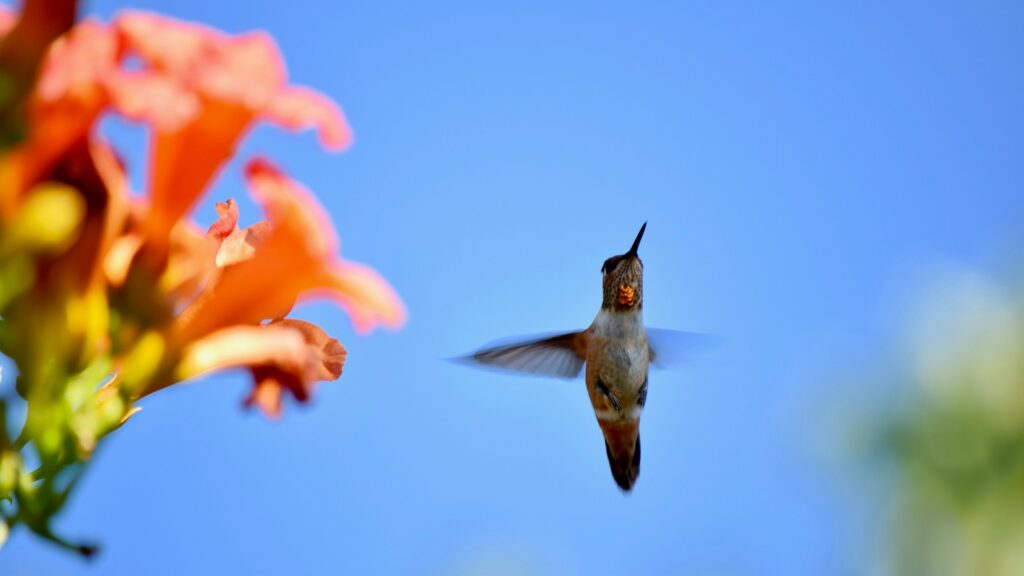
The neurological foundations of hummingbird hovering represent one of the most sophisticated flight control systems in nature. Recent research has identified specialized neural circuits dedicated exclusively to hovering control, with direct connections between visual processing centers and flight muscle motor neurons. Their brain devotes an unusually large percentage of neural tissue to processing spatial information and controlling wing movements, despite having a brain that weighs less than 0.2 grams. The cerebellum—the brain region responsible for coordinating complex movements—is proportionally larger in hummingbirds than in other birds of similar size. Electrophysiological studies have shown that certain neurons in the hummingbird brain fire at frequencies matching their wing beat rate, suggesting a direct neural encoding of this critical movement parameter.
Technological Inspiration from Hummingbird Hovering
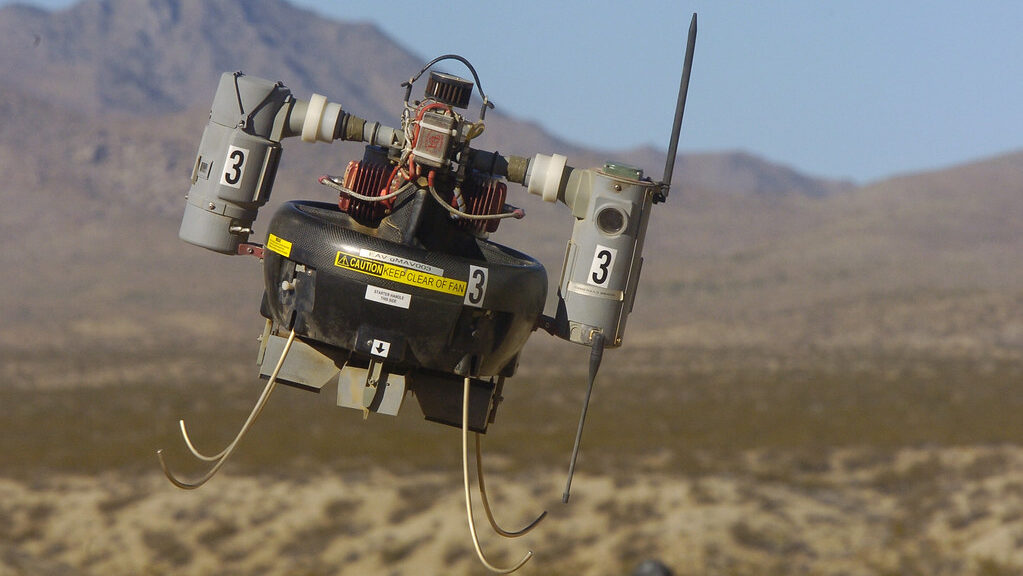
The extraordinary hovering capabilities of hummingbirds have inspired significant technological innovations, particularly in the field of micro-aerial vehicles (MAVs). Engineers at institutions like Stanford University and the Massachusetts Institute of Technology have developed small flying robots that mimic hummingbird flight mechanics, incorporating flexible wings and figure-eight motion patterns. These bio-inspired drones offer advantages over traditional propeller-based designs, including improved stability in turbulent conditions and enhanced maneuverability in confined spaces. The U.S. Defense Advanced Research Projects Agency (DARPA) has funded several hummingbird-inspired surveillance drone projects, recognizing the potential military applications of this efficient flight mode. Beyond military applications, these technologies show promise for applications ranging from pollination assistance in agriculture to search-and-rescue operations in disaster zones.
Conservation Implications for Hovering Specialists
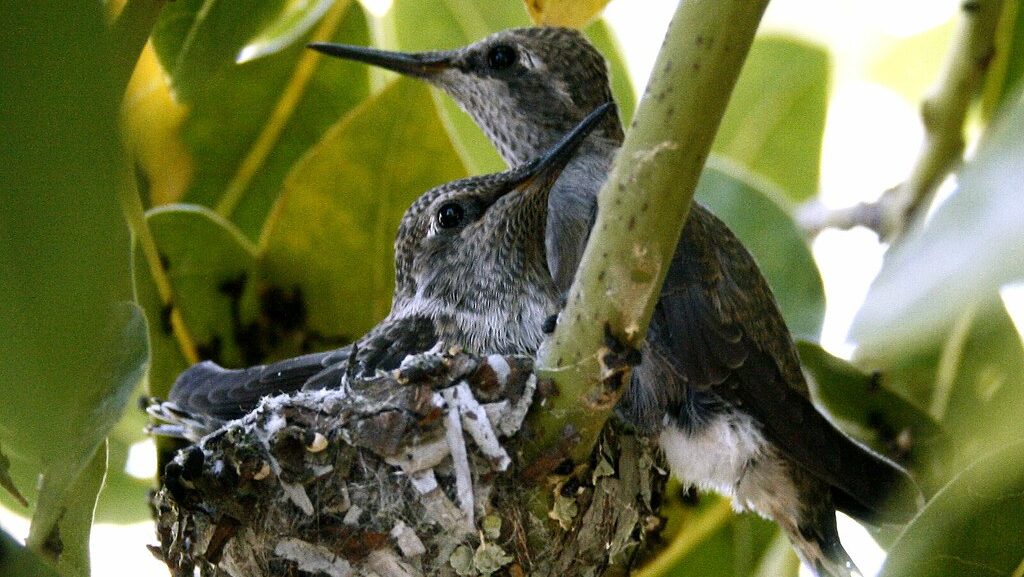
The specialized hovering adaptations that make hummingbirds so remarkable also render them vulnerable to certain environmental threats. Their high metabolic demands mean that even minor disruptions to nectar availability—whether through habitat destruction, climate change-induced shifts in flowering times, or competition from invasive species—can have severe consequences for their survival. Conservation efforts focused on preserving native flowering plants that provide reliable nectar sources are essential for maintaining healthy hummingbird populations. Citizen science projects tracking hummingbird migration and feeding patterns have provided valuable data for conservation planning, highlighting critical nectar corridors that require protection. For birdwatchers and nature enthusiasts, understanding the extraordinary physical demands of hovering reinforces the importance of maintaining pollinator-friendly gardens and supporting habitat conservation initiatives that protect these aerial marvels.
Conclusion
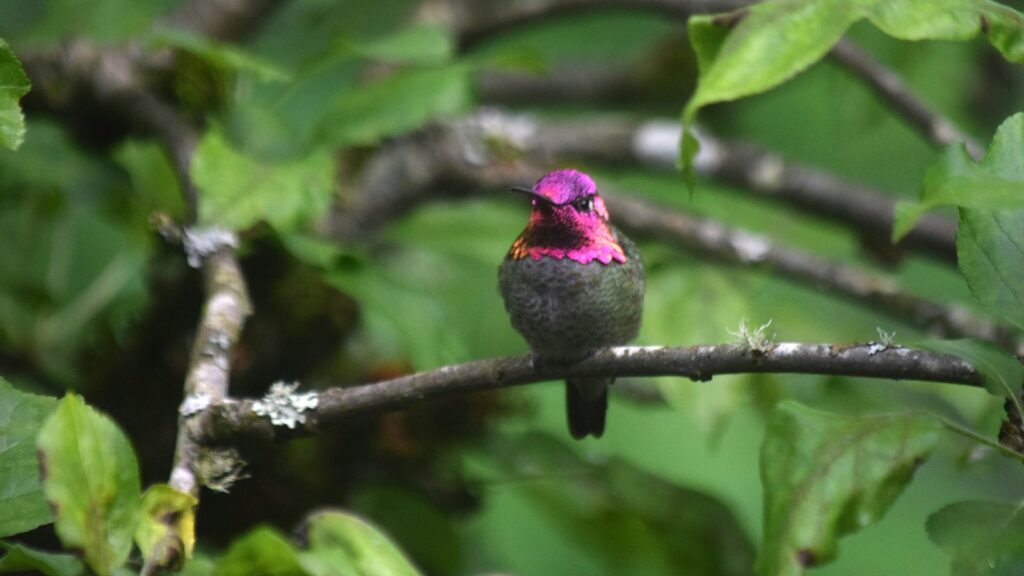
The hovering flight of hummingbirds represents one of nature’s most remarkable achievements—a perfect integration of specialized anatomy, extraordinary physiology, and sophisticated neural control. For birdwatchers fortunate enough to observe these tiny aerial marvels, understanding the complex mechanisms behind their hovering abilities adds a deeper dimension of appreciation. From their figure-eight wing motion and astonishing beat frequencies to their precision stabilization systems and specialized metabolic adaptations, every aspect of the hummingbird has been shaped by evolutionary pressures to perfect this unique flight capability. As we continue to study these extraordinary birds, they not only enrich our understanding of avian biology but also inspire technological innovations that may one day replicate their remarkable abilities in human-designed systems. In the delicate hover of a hummingbird, we witness not just a feeding strategy, but one of nature’s most perfect expressions of specialized adaptation.
